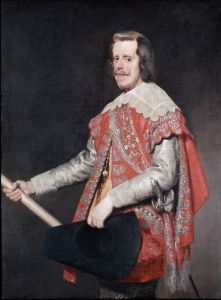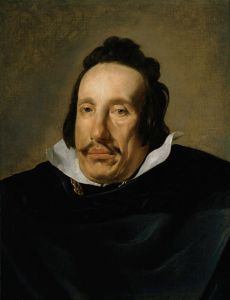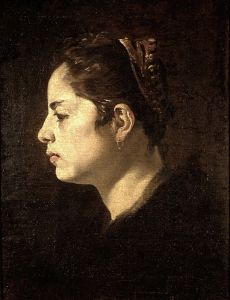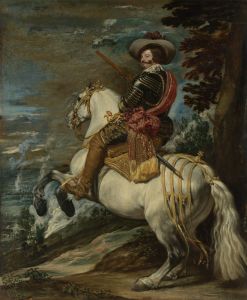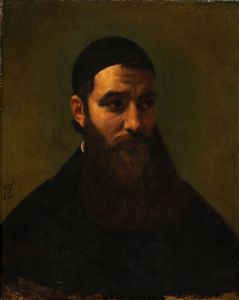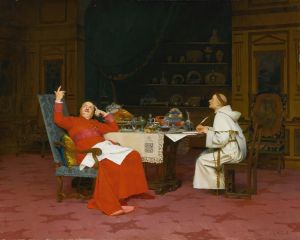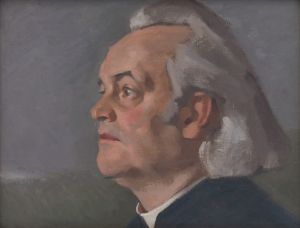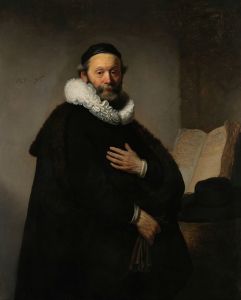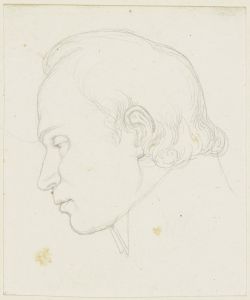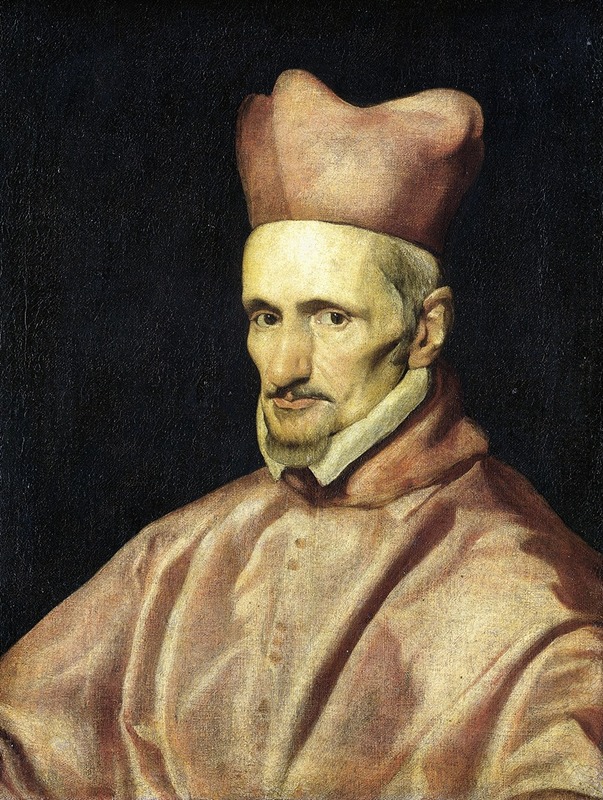
Portrait of Cardinal Gaspar de Borja y Velasco
A hand-painted replica of Diego Velázquez’s masterpiece Portrait of Cardinal Gaspar de Borja y Velasco, meticulously crafted by professional artists to capture the true essence of the original. Each piece is created with museum-quality canvas and rare mineral pigments, carefully painted by experienced artists with delicate brushstrokes and rich, layered colors to perfectly recreate the texture of the original artwork. Unlike machine-printed reproductions, this hand-painted version brings the painting to life, infused with the artist’s emotions and skill in every stroke. Whether for personal collection or home decoration, it instantly elevates the artistic atmosphere of any space.
"Portrait of Cardinal Gaspar de Borja y Velasco" is an oil painting by the renowned Spanish artist Diego Velázquez, created around 1643. Velázquez, a leading figure of the Spanish Golden Age, was known for his masterful portraits and his position as a court painter to King Philip IV of Spain. This particular portrait is a testament to his skill in capturing the likeness and character of his subjects.
The painting depicts Cardinal Gaspar de Borja y Velasco, a prominent figure in the Spanish Catholic Church and a member of the influential Borja family, which included notable figures such as Pope Alexander VI. Gaspar de Borja y Velasco held various significant positions within the Church, including that of Archbishop of Seville and Viceroy of Naples. His status and influence made him a fitting subject for Velázquez, who often painted members of the Spanish court and clergy.
In the portrait, Cardinal Borja is presented in his ecclesiastical attire, which includes a red cardinal's robe and a biretta, a square cap with three ridges. Velázquez's use of color and light is particularly noteworthy, as he employs a rich palette to convey the luxurious texture of the cardinal's garments and the solemnity of his position. The background is kept simple and dark, a technique Velázquez often used to emphasize the subject's face and expression.
Velázquez's skillful rendering of the cardinal's features demonstrates his ability to convey personality and status through portraiture. The cardinal's expression is composed and dignified, reflecting his high rank and the responsibilities that came with it. Velázquez's attention to detail is evident in the meticulous depiction of the cardinal's facial features, including his piercing eyes and the subtle lines that suggest his age and experience.
The painting is also an example of Velázquez's mastery of chiaroscuro, the use of strong contrasts between light and dark to create a sense of volume and depth. This technique enhances the three-dimensionality of the figure, making the cardinal appear almost lifelike. Velázquez's ability to capture the play of light on different surfaces, such as the sheen of the silk robe and the soft texture of the skin, adds to the realism and immediacy of the portrait.
"Portrait of Cardinal Gaspar de Borja y Velasco" is housed in the Prado Museum in Madrid, which holds one of the most comprehensive collections of Velázquez's works. The painting is an important example of Velázquez's portraiture and offers insight into the artist's approach to capturing the essence of his subjects. It also provides a glimpse into the world of 17th-century Spain, highlighting the intersection of art, politics, and religion during this period.
Overall, the portrait is a significant work within Velázquez's oeuvre, showcasing his technical prowess and his ability to convey the complexities of his subjects through portraiture. It remains a valuable piece for both art historians and admirers of Velázquez's work, illustrating the enduring legacy of one of Spain's greatest painters.





